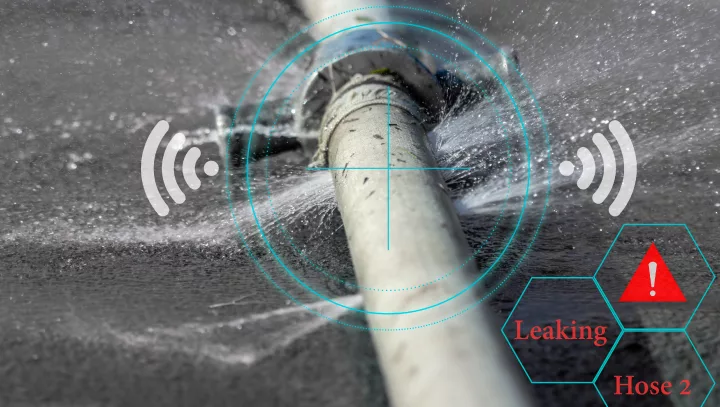Innovative Solutions for Early Discovery of Water Leaks in Buildings and Framework
As the stability of structures and facilities is critical, the obstacle of very early detection of water leaks has stimulated ingenious services that guarantee to change the means we guard against possible damages. From advanced leak discovery technologies to the implementation of IoT sensors for real-time monitoring, the landscape of leakage avoidance is advancing swiftly. Device understanding formulas provide a glance into the future of leak forecast, while thermal imaging offers a non-intrusive technique for pinpointing concealed leakages. Automated water circulation analysis systems are improving how leaks are recognized and resolved, paving the means for a proactive technique to water leakage discovery. Each of these remedies holds the essential to making certain the reliability and long life of our built atmosphere, prompting a change in the direction of a much more sustainable and efficient future.
Advanced Leakage Discovery Technologies
Advanced leak detection modern technologies, geared up with advanced sensors and formulas, play a vital role in quickly recognizing and determining water leaks in numerous setups. Electromagnetic sensing units can recognize adjustments in electromagnetic fields triggered by water, offering yet one more layer of leak detection capacity.

IoT Sensors for Real-Time Tracking
In the world of modern water leakage discovery, the combination of IoT sensors for real-time tracking stands for a pivotal improvement in boosting positive leakage detection capacities. These sensors provide continual surveillance of water systems, offering real-time data on water flow rates, pressure variations, and temperature changes. By leveraging IoT modern technology, these sensors can discover also the smallest abnormalities in water usage patterns, making it possible for early identification of prospective leaks prior to they rise right into significant issues.
IoT sensing units transmit data to a centralized system, where sophisticated formulas evaluate the info and create notifies or notifications when abnormalities are detected. This real-time surveillance ability permits homeowner or facility managers to promptly resolve leaks, lessening water damages, reducing repair service expenses, and preserving water resources.
Additionally, IoT sensors can be incorporated with structure monitoring systems, enabling automatic responses to identified leaks, such as shutting down water shutoffs or triggering pumps to reduce the impact of leaks. Overall, the execution of IoT sensing units for real-time tracking dramatically improves blog the effectiveness and efficiency of water leakage detection in structures and framework.
Machine Discovering Algorithms for Leak Prediction

One trick benefit of using artificial intelligence for leakage site link prediction is its ability to continuously discover and enhance its accuracy in time. As more information is collected and fed into the formula, it can refine its predictions and adapt to transforming problems, eventually increasing the dependability of leakage discovery systems.
In addition, device discovering formulas can assist in identifying refined signs of leaks that may go undetected by conventional tracking methods. water leak detection. By evaluating complex information embed in real-time, these formulas can give early cautions and notifies, enabling for punctual intervention and preventive upkeep to alleviate possible water damage and associated costs
Making Use Of Thermal Imaging for Leak Detection
Thermal imaging innovation supplies an encouraging method for finding water leaks in numerous systems and facilities. By utilizing infrared radiation and temperature differences, thermal imaging cams can identify surprise leakages that are not easily noticeable to the naked eye. When water leaves from pipelines or structures, it usually alters the temperature of the surrounding area, developing temperature level differentials that thermal cameras can capture. These temperature abnormalities are then translated into noticeable photos, highlighting the precise place of the leak.
One of the key advantages of thermal imaging for leakage detection is its non-intrusive nature. Unlike conventional methods that might need burglarizing wall surfaces or floorings to situate leaks, thermal imaging permits non-destructive testing. This not only saves time and reduces expenses however likewise minimizes disruption to the building or infrastructure being evaluated. In addition, thermal imaging can promptly check huge areas, supplying an extensive introduction of potential leakage sources in click for source a prompt way. On the whole, using thermal imaging technology boosts the efficiency and accuracy of water leakage detection, making it a valuable tool for preserving the honesty of structures and facilities.
Automated Water Flow Evaluation Equipments
Just how can automatic water circulation evaluation systems change the detection and administration of leaks in different systems and frameworks? Automated water circulation analysis systems offer an aggressive technique to leakage discovery by continually monitoring water flow rates and patterns. By establishing standard information, these systems can promptly recognize variances that might show a leakage, making it possible for punctual intervention to stop extensive damage.
These systems utilize advanced formulas to evaluate real-time information and provide instant notifies when abnormalities are spotted, enabling quick action to be taken. Furthermore, computerized water circulation evaluation systems can be integrated with building administration systems or IoT platforms, improving general efficiency and enabling remote tracking capacities.
Additionally, the data collected by these systems can be made use of for predictive maintenance functions, helping to identify prospective powerlessness in the infrastructure before leaks happen. On the whole, the implementation of computerized water circulation evaluation systems can significantly boost leakage detection and management methods, ultimately bring about cost savings, decreased water waste, and enhanced sustainability in structures and infrastructure.

Conclusion
Finally, the assimilation of sophisticated leak detection technologies, IoT sensors, equipment discovering formulas, thermal imaging, and computerized water circulation analysis systems offers innovative remedies for early detection of water leakages in structures and infrastructure. These modern technologies allow real-time tracking, forecast of leaks, and reliable detection approaches to prevent water damages and wastage. Executing these services can help in preserving the stability and sustainability of water supply in various setups.